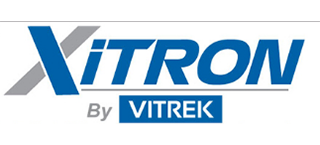GaAs
The Principle
FISO’s fiber optic temperature probes for medical applications are based on white light absorption/transmission by a GaAs (gallium arsenide) semiconductor. The effects of the temperature variations on this semiconductor are well-known and predictable. As the temperature of the semiconductor increases, the semiconductor’s transmission spectrum (i.e. the light that is not absorbed) shifts to higher wavelengths. At any given temperature, transmission essentially jumps from 0% to 100% at a specific wavelength. This jump is called the absorption shift, and the relationship between a specific wavelength -where the absorption shift takes place- and the temperature is therefore predictable.
Why does this shift occur? The physical explanation for this phenomenon is found in the variation that occurs into the semiconductor’s energy band gap. This “gap” refers to the energy required to bump the electrons in the material into an excited state (as opposed to the relaxed, steady state). As more energy enters the semiconductor, in the form of heat as its temperature rises, the gap gets narrower –which means that less additional energy is required to excite an electron. The photons (particles of light) entering the semiconductor are what actually excite the electrons. If a photon is carrying enough energy to get an electron across the gap, it will be absorbed. If it does not carry enough energy, then it will be transmitted. The shorter a photon’s wavelength is, the more energy it carries. Since the band gap narrows as the semiconductor’s temperature increases, less energy will be required to jump across the gap, and photons with less and less energy (longer and longer wavelengths) will be absorbed “by the band”, as they say.
Consequently, measuring the position of the absorption shift gives a measure of the semiconductor’s temperature. It is important to note that this technology is wavelength dependent instead of intensity dependent.
























